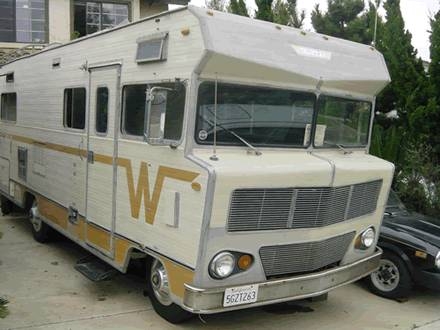
Motorhomes have been a staple of the American highways since the late 1950's. Thousands of used motorhomes are for sale in just about any large city, and trying to find the best one can be a daunting task. Following a few simple evaluation guidelines, a novice can determine which recreational vehicle is the correct one for them.
Check the motorhome's history. This is best accomplished using it's VIN number, placed on the outside of the RV, near the main entry door. Most models will have several plates here, giving the manufacturing date and other information. The VIN will enable the evaluator to run a background check on the RV, and to find out if it is a salvage vehicle or if it has an accident history.
Check routine maintenance fluids and parts. Owners who neglect to maintain a motorhome will leave air and oil filters dirty, and not change the oil or coolant as often as they should. Motorhomes typically require more maintenance, as most are built on van or truck chassis that quickly reach their weight limit when made into an RV. Special attention to the transmission should be paid, looking for burnt or low fluid. Transmissions are notorious for failing on RV's with heavy bodies. Use the flashlight and search diligently for leaks in the engine bay and underneath the RV. Differential housings and transfer cases should also be inspected.
Run all subsystems and appliances for several minutes. The water system, which includes gray and black water holding tanks, is prone to leaking and may lose pressure when in use. Many evaluators will forget about this, and not test the system for faults by running at least ten gallons through it. Once the system is pressurized, shut it off and keep it at pressure, checking for leaks around the outside of the RV. Turn on the air conditioner, stove, microwave, and any other appliances to check their operation.
Turn on all lights. You should also check the operation of the generator unit, if applicable. Blown lights usually are not hard to repair, but can be an indicator of owner neglect.
Inspect the pressurized gas (LPG) system. The stove, typically a gas powered model, will have an LPG storage tank located on the outside of the vehicle. The furnace heater and hot water heater will also be gas powered on most models. Check the tank for rust, and the expiration date. This is a very often overlooked part of the motorhome, and can be somewhat expensive to replace.
Check the roof for patches or leaks. Water will leave a tell-tale stain on the seals and walls, but patches usually can only be spotted on the roof. Climb up to the roof and look for recent roofing tar application, or signs of cracks or stress. Problem areas are usually the corners, along the seals, and around the A/C unit.
Check the tires for uneven wear. Motorhome tires are usually much more expensive than average automotive tires, and signs of uneven wear could signal an alignment or suspension problem. Worn suspensions, common on overloaded motorhomes, can cause accidents if not attended to.